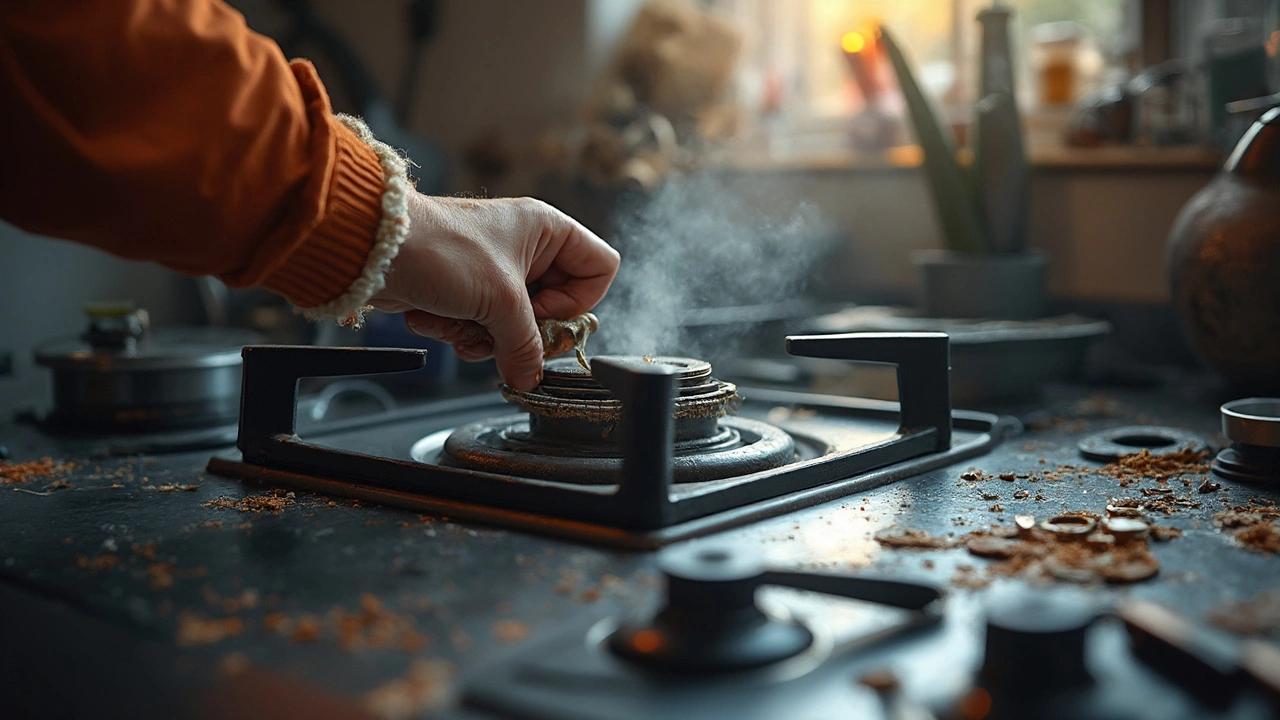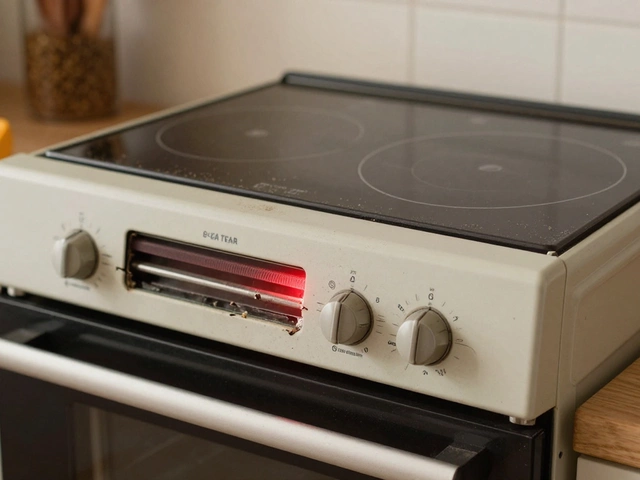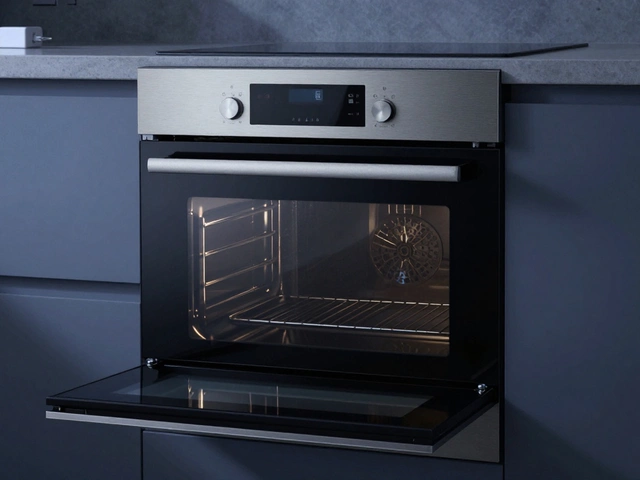Ever walked into the kitchen ready to whip up a meal and your trusty gas cooktop decides not to play ball? Before you start panicking or thinking about spending on a professional, hold on. A lot of common gas cooktop problems can be tackled with a bit of know-how and elbow grease.
First off, let's talk about the usual suspects. Burner not lighting? It might just be a clogged burner port or a faulty igniter. These are issues you can spot and sort out with some basic tools you probably have lying around.
Here’s the thing, though—safety is a big deal when dealing with gas appliances. Make sure you turn off the gas supply before poking around. A simple soap and water solution can be your best friend to check for gas leaks.
Thinking it's all too much work? Be ready to spot the signs where DIY isn't the solution and calling a professional becomes inevitable. Knowing the limit of your handyman skills might save you greater headaches down the line.
- Common Gas Cooktop Issues
- Essential Tools for DIY Repair
- Safety First: Precautions to Follow
- When to Call a Professional
Common Gas Cooktop Issues
Gas cooktops can be pesky when they decide to misbehave. If yours isn't heating or is causing trouble, you're not alone. There are a few gas cooktop repair issues that many of us face. Let’s break down some of these common problems and see what can be done about them.
1. Igniter Problems
If you hear the clicking sound but your burner doesn't ignite, it might be an igniter issue. Grease buildup around the igniter or a misaligned burner cap can cause this. To tackle this, turn off the power and gas supply first. Use a toothbrush or a needle to clean around the igniter gently. Ensure the burner cap is seated correctly.
2. Clogged Burner Ports
Burner not heating evenly? Clogged burner ports could be the culprit. Grease and food particles can easily block these tiny holes. With a safety pin or a piece of wire, you can clean these ports. Remember, patience is key. Don't rush and accidentally damage the ports.
3. Gas Smell Around the Cooktop
Here’s a biggie—if you smell gas around your cooktop, it's time to step back and act quickly. Turn off the gas supply immediately. Test for leaks using a sponge and soapy water solution. Apply it over the joints and connections. If bubbles form, you've got a leak. This is a case where calling a professional is mandatory.
4. Heating Element Fails to Heat
One or more of the burners not heating up? It might be an issue with the heating element or the gas flow. Ensure your gas supply is sufficient, and if the issue persists, the problem might lie in the internal components—a job best left for the pros.
Knowing these common appliance repair tips can save you from unnecessary stress and expenses. But, remember, safety should always be your priority when handling gas appliances.
Essential Tools for DIY Repair
If you're diving into the world of gas cooktop repair, having the right tools can make a world of difference. You don't need a fancy toolkit, but a few essentials will definitely help you on your DIY journey.
Basic Toolkit
First things first, a basic toolkit will cover most of your needs. A good set of screwdrivers—both flathead and Phillips—will be your go-to. Most of the parts on a cooktop are fastened with screws, so having the right driver is crucial.
Gas Safe Tools
Anything dealing with gas requires extra care, so ensure you have a gas leak detector or at least a soap and water solution to test for leaks. A crescent wrench can be handy for loosening gas lines or fittings, but make sure you're being safe and gentle.
Cleaning & Maintenance Gear
Cleaning might not sound like a 'tool,' but a stiff brush and some wire cleaners are essential for keeping those burner ports unclogged. A clean cooktop is a happy cooktop, so never underestimate the power of a good scrub!
Additional Handy Tools
Depending on the issue at hand, you might need a multimeter to test electrical connections, especially if the igniter is acting up. And don't forget protective gear—gloves and goggles keep you safe from unexpected mishaps.
| Tool | Purpose |
|---|---|
| Screwdrivers | Disassembling cooktop parts |
| Crescent Wrench | Adjusting gas lines |
| Wire Cleaners | Cleaning burner ports |
| Gas Leak Detector | Ensuring no leaks happen |
| Multimeter | Checking electrical parts |
With these tools, dealing with that stubborn gas cooktop repair becomes a whole lot easier. Just remember, safety first and know when to throw in the towel. Sometimes, calling a pro is the best tool in your belt!

Safety First: Precautions to Follow
When you're fiddling with a gas cooktop repair, safety isn't just an afterthought—it's the first thought. Gas is tricky, and playing it safe can prevent accidents and ensure everyone stays out of harm's way.
Turn Off the Gas Supply
Your first move should always be to shut off the gas. Most cooktops have a valve nearby. Find it and turn it off before diving into any repair work. This simple step can be a life-saver.
Avoid Flames and Sparks
Spark and gas do not mix well. It’s crucial to keep away any open flames or items that can cause a spark, especially if you suspect a leak. Easy way to avoid trouble, right?
Identify and Seal Leaks
Got a sneaky suspicion there's a gas leak? Grab a simple mix of soap and water and apply it to the connections and hoses. Turn on the gas slightly and watch for bubbles. If you see any, you know there’s a leak.
- Check the hoses and connections with soapy water.
- If bubbles form, there's a leak. Turn off the gas immediately.
- Don't attempt a fix with the gas on.
Ventilation is Key
Working in a cramped, stuffy area? Open a window or use a vent. Focusing on repairs without proper airflow can lead to a buildup of gas, which is exactly what you don't want.
Tools Check
Make sure your tools are in good shape. Using faulty or improper tools could spell disaster. Trust me, trying to repair with a half-broken wrench is not worth the risk.
When in Doubt, Call a Pro
Some jobs are just too risky for DIY fixes. If you’re ever unsure about what you're doing, don't hesitate to call in a professional. Better safe than sorry, right?
When to Call a Professional
So, when is it time to throw in the towel and call in a pro for your gas cooktop repair? While a lot can be handled on home turf, there are certain issues that require expert attention.
Complex Gas Leaks
If you suspect a gas leak and can't pinpoint it, don't mess around. Gas leaks are hazardous and need immediate professional intervention. A certified technician has the tools and knowledge to deal with these tricky situations safely.
Electrical Component Failures
If you find that electrical components, like the switch or control panel, aren't working, it's best left to those with the right expertise. Mishandling electrical parts could exacerbate the problem, or worse, pose a risk of electric shock.
Burner and Valve Malfunctions
Is your burner flame inconsistent or have full valve failure? These are signs that a deeper issue might be at play. Technicians can accurately diagnose and fix such problems without you having to second guess.
Warranty Considerations
Got a warranty running? Don’t void it by attempting repairs yourself that breach warranty terms. Most manufacturers require or recommend repairs by authorized service centers to maintain coverage.
Stat Overview: Appliance Repair Costs
Curious about what's typical for professional appliance repair? Here's a quick look:
| Appliance Repair | Average Cost |
|---|---|
| Gas Cooktop Repair | $100 - $300 |
| Electrical Fault Repair | $150 - $400 |
Ultimately, knowing when to call a professional isn't just about addressing the issue. It's about ensuring safety, maintaining equipment durability, and in some cases, saving a buck or two in the long run.




